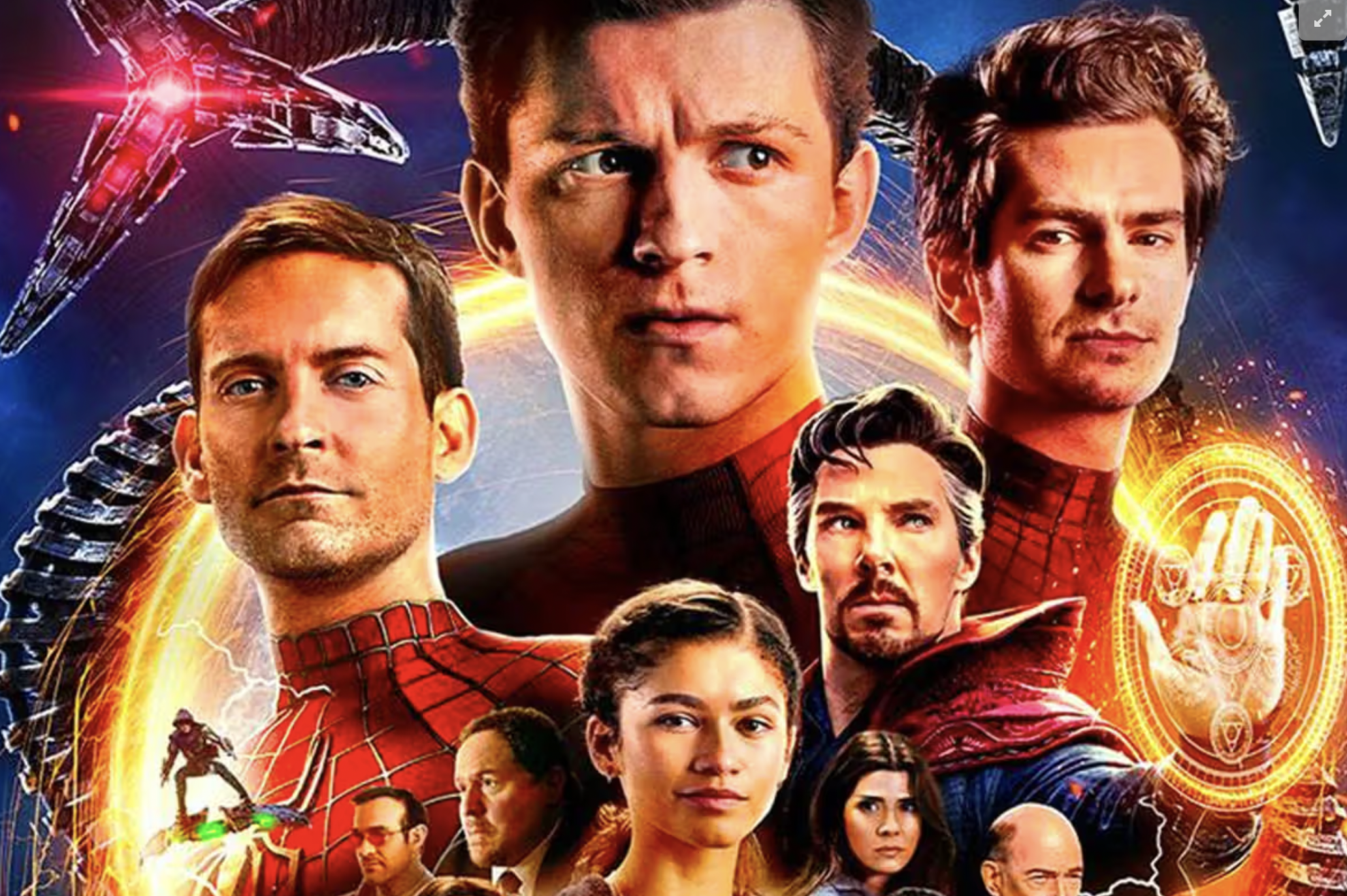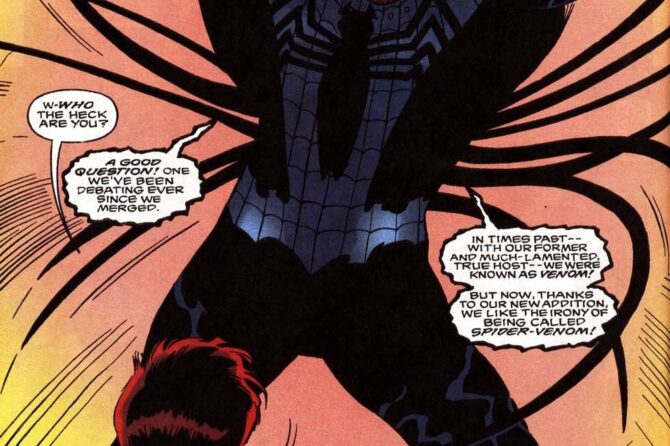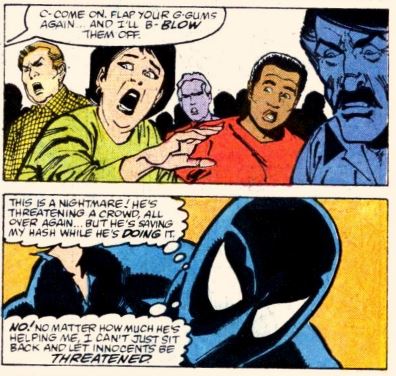
This month, the other columnists and I are doing a bit of a crossover. With Spider-Geddon coming out and featuring a crossover between Spider-Men of different worlds, we’re tackling alternate realities. I’m starting with the question of how alternate universes and takes on the character have become a part of the series.
Spider-Man started out as a street level hero, so travels to other dimensions may seem rather off-brand. However, the Spider-Geddon mini-series is highly promoted, and a follow-up to Spider-Verse, which sold well, with multiple tie-ins and an omnibus hardcover. The upcoming animated film Into the Spider-Verse is also going to feature Peter Parkers from different realities, so this idea has spread beyond the comics, and seems likely to stick around.
Within the context of the Marvel Universe, it’s understood that there are thousands of coexisting realities. The regular Marvel Universe is referred to as Earth-616. That started as a parody of DC’s pre-Crisis decision to call the Universe that premiered during the Silver Age as Earth One, while the Golden Age DC Universe was Earth Two. The joke with the 616 was that the world of the Marvel comics wasn’t even one of the most important universes. Fans started using the designation as a way to compare the regular Marvel Universe to the Ultimate Universe, or to any alternate worlds. Some think that it’s too much of an in-joke, a mannerism that can make Marvel comics seem unapproachable to new readers.
Tom Brevoort doesn’t care for it, and explained why.
I can tell you for sure that those of us actually working on the books virtually never use the term — and I kind of wince inside whenever I hear somebody use it. It just sounds so stupid to my ear, and so counter to the kind of mindset we try to foster in regard to the stories we create and the thinking we try to employ.
Joe Quesada also avoids the phrase.
I never use it, I hate the term pure and simple and agree with Tom’s assessment of it. I can’t remember ever hearing it in the office and only really see it used online for the most part. I think the term really came into vogue when the Ultimate Universe came into prominence, but in my world, the language and distinctions are simple, there is the Marvel Universe and the Ultimate Universe. Anything other than that reeks of all that DC Earth 1, Earth 2, Earth Prime stuff which I’ve never really taken to, but then again, I got into DC when they got rid of all that stuff so it was from and for a different era than my own.

Quesada suggests that alternate universes are a “DC” thing, which makes it unusual that this has become part of the Spider-Man books. The dynamics are a bit different. With DC, there isn’t a “real” Superman, as the Earth‑One, Earth‑Two, post‑Crisis, post-Convergence Superman all vie for that title with the Timm/ Dini Animated Superman, Christopher Reeve’s iconic performance, Henry Cavill’s take from the new films, Tyler Hoelchin’s take from Supergirl, and the All-Star Superman from arguably the most acclaimed Superman comic book. I’ve left out a few. The Marvel Universe Spider-Man is essentially the sole contender to the title of real Spider-Man, as the subject of most stories (great and otherwise) even if the since rebooted Maguire/ Raimi Spider-Man and the MCU Peter Parker may be more profitable, and individual readers might prefer one of the spinoffs (fans of the Clone Saga might see Ben Reilly as “their” Spider-Man, some MC2 fans prefer that version of Peter Parker.)
The big reason there’s one main Marvel Universe is that the original Lee/ Kirby/ Ditko stories which kicked it off are so good (significantly better‑regarded than Siegel/ Shuster’s Superman and Kane/Finger’s Batman) that the later writers didn’t hesitate to build on (and reference) the earlier stories, which started being reprinted since Marvel Tales began. A firm timeline was established long before Ditko even left the title, which increases the difficulty of a Legends of the Dark Knight type book set vaguely in the past. Something set between Amazing Spider-Man #38 and 39 will be different than something set between Amazing Spider-Man #62 and 63. You rarely see any DC silver‑age stories on general Best‑of lists, though “This Man, This Monster” and the Master Planner saga don’t seem out of place in selections of the best comic book stories.
Despite a few retcons and changes to the setting, the Spider-Man in the current comics is the same one who was in Amazing Fantasy #15. One of the things that made the book unique was that Peter Parker grew as the series progressed. His status quo changed, as he graduated from high school, went to college, lost touch with friends, changed jobs, etc. Marvel made no effort to hide these changes from readers, as reprint collections like Marvel Tales collected the earlier adventures of Spider-Man. It did take some time for the different versions of Spider-Man to be an element of the books.

Even with all these changes, it was decades before Marvel told new stories with Peter’s history. That didn’t really happen until the 1990s when Kurt Busiek wrote the Amazing Fantasy mini-series and Untold Tales of Spider-Man monthly. The short story collection The Ultimate Spider-Man came around that time, and featured tales from Peter’s past and present, with a retelling of his origin and a story about Peter getting over his defeat at the hands of the Vulture in Amazing Spider-Man #7.
There had been other versions of Peter Parker, with the 1960s cartoon, the Spidey Super Stories series for kids, and the Spider-Ham comics. The 1980s had two animated series, one establishing Peter as roommates with Firestar and Iceman. The first issue of What If? depicted a universe in which events happened differently in Amazing Spider-Man #1, and Spider-Man was allowed to join the Fantastic Four.
The original clone saga ended Gerry Conway’s run of Amazing Spider-Man with a showdown between Peter Parker and his clone, although the moral question was whether Peter could tell whether he was the original or the clone, not what it meant to face someone who became a different man after starting out from the same place. We didn’t see those questions until the follow-up in the 1990s, as Ben Reilly returned after a five year exile. The story also introduced other clones and marked a key time when Peter Parker saw different versions of himself. The decade also saw the creation of Spider-Man 2099, and the team-up one-shot marked an early instance in which Peter encountered his legacy.

Outside the comics, the 1990s Fox animated series concluded with a storyline featuring Spider-Men from different universes. This was a nod to the complex history of the character, and also served as a way to tie up the series with nods to its past (a cliffhanger involving the return of the Man-Spider) while introducing things that hadn’t been done before on that series (clones and Gwen Stacy.) It allowed Peter to see two worlds that had emotional power for the viewers: one in which he was able to save Uncle Ben, and the real world where he gets to meet Stan Lee.
Within a few years, there was more focus on the different versions of Peter Parker within the comics. The Webspinners anthology title had stories set when Peter was in high school, when he was in college, and when he had the black costume. Spider-Girl was a spinoff of a wildly successful What If? issue, showing a world in which Peter and MJ’s daughter got to be a superhero. Ultimate Spider-Man showed a new take on the origin, with a teenager gaining powers in the 21st Century.
There still weren’t many crossovers between these worlds. Spider-Girl encountered the silver age Spider-Man in a time travel story, but it was a one-off. EIC Joe Quesada was pretty adamant that the Peter Parker of the Ultimate books should not encounter his classic counterpart, suggesting that if it were to happen, it would be an admission Marvel was out of ideas.
JMS’s run had hints of different versions of Spider-Man. Amazing Spider-Man #500 had Peter witness a possible version of his death, falling during a battle with the police. One More Day ended with Peter seeing different versions of how his life could have been, with a callous industrialist and a chubby geek.

The 2010 video game Shattered Dimensions featured multiple versions of Spider-Man. Dan Slott was one of the writers, which is appropriate since he’s one of the key figures in bringing different universes to the Spider-Man comics. In the video game form, these alternate versions served as an excuse to give players multiple Spider-Man based characters and worlds to experience.
2011’s Amazing Spider-Man Annual #38 was an early instance of Peter encountering a version of himself from another world, part of a Hulk and Deadpool crossover by John Layman. It probably should have had more impact on Peter to encounter a version of himself that was so evil, but that’s a different question.
In 2012, the Spider-Men mini-series brought together the classic Marvel and Ultimate universes for the first time. While Quesada initially suggested a crossover between worlds wouldn’t work, telling the story after the death of the Ultimate Peter Parker allowed Peter to encounter a very different kind of world, one in which he had become a famous hero, posthumously. During the same year in Amazing Spider-Man Annual #39, Peter sees a world in which Spider-Man never existed.
If these earlier stories were hints that different dimensions were becoming a major part of the Spider-Man mythos, Dan Slott’s Spider-Verse storyline made it permanent. The story revealed that Morlun—one of the most significant Spider-Man villains of the 21st Century—had come from a different universe. When Peter encountered Miles and Mayday, he was intimately familiar with them. Spider-Gwen was introduced, quickly gaining her own title, and becoming a mainstay in various adaptations. A brief appearance of a version of Peter who became a family man seeded the Renew Your Vows mini-series, which became a monthly title.

At this point, alternate universes have become part of the Spider-Man mythos. It might not always be part of the book, but keeping other dimensions out is going to require a concerted effort and editorial restrictions, sort of how after Man of Steel and Crisis on Infinite Earths, DC decided to make Superman the only surviving Kryptonian, which mandated some changes. Once editorial softened, Zod and the classic Supergirl returned.
This is a major genre shift, as multiple dimensions weren’t exactly part of the Lee/ Ditko or Lee/ Romita run. But we’ve been seeing it in prominent places recently, to the extent that we now have multiple titles about dimension-hopping characters, and a film about it.
It works for Spider-Man in particular, because there is one Spider-Man who had adventures going back decades. As a result, it’s interesting to see different versions playing off one another, allowing for an exploration of the core of the character. At a time when Marvel’s nervous about changes to the series, this is a way for them to have their cake and eat it, too. They can feature a version of Peter Parker that has gone in a different direction, without requiring changes to the Peter Parker in the main title. It’s also a way to examine the character’s past, with new characters encountering the younger teenage version of the hero, and a modern exploration of what it would mean to be a hero in the 1960s.

The multiple dimensions isn’t an essential part of the Spider-Man comics, in that you can tell good stories without it. But it does seem to be something that’s sticking around, and I’m curious about the implications. For one thing, Peter Parker’s view of himself is going to be closer to the reader’s with an appreciation for his significance when he sees how important he is in all of these universes. It’s the type of thing that might change his perceptions.
 will continue.
will continue.









What a great and important article, Thomas; I’ve always had in the back of my mind the idea of how I could bring a comparison between “The Untold Tales of Spider-Man” and “Legends of The Dark Knight”, but your analysis from the Spider-verse using the different earths from DC and how both editorial groups approach their distinctive multiverses sheds a very good light on the matter.
Not only an important piece of information regarding Spidey’s publication history with the proper background knowledge, but also a good historical analysis of superhero comics.